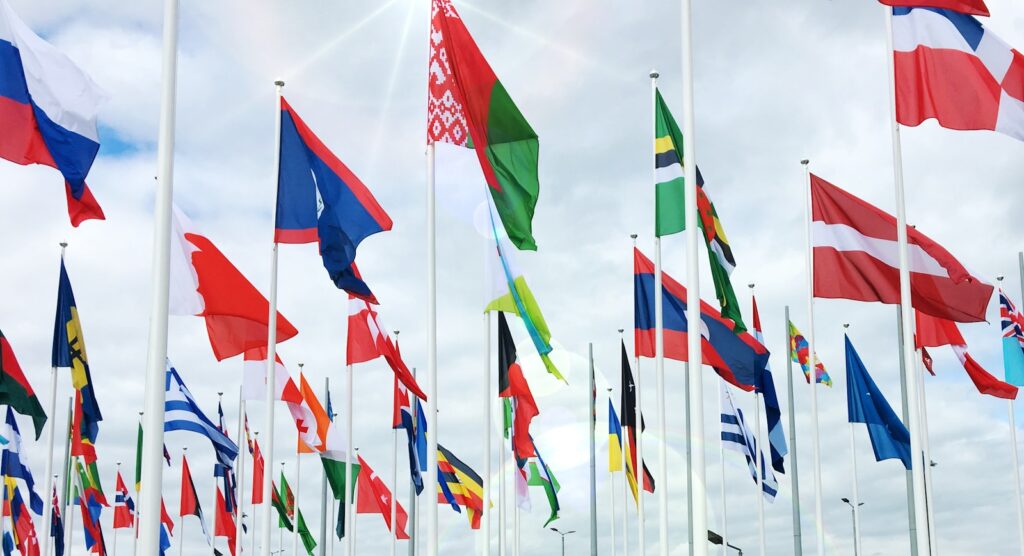
The global financial markets, perpetually on edge for the next big shift, experienced a truly electrifying jolt early Monday. A pivotal announcement from China’s Contemporary Amperex Technology (CATL), the world’s foremost electric vehicle (EV) battery manufacturer, sent shockwaves across the commodities landscape, igniting a spectacular surge in lithium prices and captivating investor interest worldwide.
This momentous shift unfolded as CATL confirmed the halting of operations at its Jianxiawo mine, a veritable titan in China’s Yichun lithium hub and a significant contributor to global output. The closure, attributed to an expired permit, has cast a new light on the intricate interplay of supply, demand, and strategic governmental policy in the critical battery metal sector.
Indeed, the market’s response was immediate and emphatic. Lithium stocks witnessed a dramatic ascent, painting a vibrant picture of renewed confidence and speculative fervor. Shares of Albemarle (ALB) and Sociedad Química y Minera (SQM), globally recognized as the two largest lithium producers, soared by more than 11% and 9% respectively, in early trading, with Albemarle later surging above 15% and SQM more than 12% in US trading.
The enthusiasm was contagious, extending its reach across the entire sector. Fellow major lithium miners and processors such as Lithium Americas (LAC) and Sigma Lithium (SGML) saw their stock values climb impressively, with Lithium Americas gaining over 8% and Sigma Lithium experiencing a remarkable 16% ascent. Piedmont Lithium Inc. jumped by nearly 18%, showcasing the broad-based optimism.

Asian and Australian markets mirrored this robust performance. Tianqi Lithium Corp. experienced a significant leap of as much as 19% in Hong Kong, while Ganfeng Lithium Group Co. surged an astounding 21%. Australian lithium producers were also swept up in the rally, with PLS Ltd., formerly Pilbara Minerals Ltd., jumping as much as 20% in Sydney, Liontown Resources Ltd. surging 25%, and Mineral Resources Ltd. climbing as much as 14%. Even Tesla (TSLA), a major customer of CATL, saw its stock rise by 2% early Monday morning, underscoring the interconnectedness of the EV ecosystem.
Beyond individual stock performances, the raw material itself demonstrated its newfound vigor. The price of spot lithium surged by nearly 4% on Monday, a compelling continuation of a trend that has seen lithium prices rise by over 15% in the past month. On the Guangzhou Futures Exchange, the most-active lithium carbonate futures contract, due in November, jumped by its daily limit of 8%, settling at 81,000 yuan a ton, a notable increase from Friday’s 75,000 yuan.
Further reinforcing this upward momentum, spot lithium carbonate prices in China ascended by 3% on Monday, reaching 75,500 yuan a ton, marking the highest level since February. The Liyang Zhonglianjin E-Commerce platform, a key benchmark for domestic investors, reported that lithium carbonate prices for November delivery surged by over 10,000 yuan, settling at approximately 85,500 yuan per ton. This collective surge vividly illustrates the market’s immediate and forceful reaction to the supply alteration.
The genesis of this dramatic market event lies with CATL’s decision to halt operations at its Jianxiawo mine. According to Bloomberg, the company announced early Monday morning that the mine, which is the largest in China’s Yichun lithium hub, would be shuttered for three months as it endeavors to renew its license, which notably expired on August 9. This seemingly administrative detail has had outsized implications for global supply.

CATL’s preeminence in the global EV battery landscape cannot be overstated; the company commands more than a third of the market. While the company itself suggested the stoppage would have minimal impact on its overall operations, and its shares initially rose as much as 2.8% in Hong Kong, the broader market interpretation focused intently on the supply-side ramifications.
One of the most intriguing aspects underpinning this closure is its likely alignment with Beijing’s escalating campaign against “involution.” This economic phenomenon, as viewed by Chinese authorities, describes a self-defeating cycle where increasing competitive prices for resources like lithium ultimately hinder development rather than stimulating it. The government aims to tackle pervasive overcapacity across various sectors.
This “anti-involution” theme has profoundly influenced China’s financial markets in recent months, prompting investors to scrutinize industries and companies that could either benefit from or be affected by Beijing-led efforts to combat deflation and oversupply. Its scope is broad, encompassing sectors ranging from e-commerce to electric vehicles and even steelmaking, highlighting a concerted strategic pivot.

Analysts at Citigroup Inc. echoed this perspective, stating in a note, “We believe this could be part of the government’s anti-innovation initiative.” They further articulated that closures in Yichun “should help China to re-price its strategic resource in the long run, and the government can ensure lithium is mined and extracted in a proper and compliant way.” This suggests a deliberate, strategic underpinning to what might otherwise appear as a mere permit issue.
Lithium’s ascent to centrality in the global market has been meteoric over the past few years, driven by its indispensable role in the rapidly expanding electric vehicle industry. Beyond EVs, its critical function extends to enhancing the storage capacity of power grids and powering a vast array of essential electronics, including modern smartphones and laptops, underscoring its foundational importance to the digital economy.
Despite its growing demand, the lithium market has experienced considerable volatility. Prices for the metal had seen a sharp decline over the past couple of years, plunging to their lowest levels since 2021 in June after a substantial 20% drop from the start of the year. This downturn was largely attributed to a global supply glut, as mines worldwide maintained robust production, causing output to consistently outpace prevailing demand.
The sheer scale of recent production increases further illuminates this oversupply. Data from the commodities pricing agency Fastmarkets indicates that production in China alone has surged by an astonishing 55% since 2023. This rapid expansion, combined with other demand headwinds, such as former President Donald Trump’s rollback of incentives for the EV industry in the US, contributed significantly to the downward pressure on prices.

The Jianxiawo mine, though only one of many, plays a substantial role in the global lithium supply chain, accounting for approximately 6% of worldwide output, according to Bank of America Corp. Furthermore, other mines within China’s Yichun region collectively contribute at least another 5%, highlighting the hub’s critical importance to the global market. Therefore, any disruption in this region carries significant weight.
The market eagerly awaited expert commentary, and the insights swiftly arrived. Matty Zhao, co-head of China equity research at Bank of America, articulated a profoundly optimistic outlook during a Bloomberg TV interview, stating, “I think it will mean the lithium price in the near term has very big upside.” This sentiment captures the renewed bullishness now coursing through the lithium market.
Eugene Hsiao, the head of China equity strategy at Macquarie Capital, offered a nuanced perspective on CATL’s operational resilience. While acknowledging the closure, he stated, “For CATL, we do not expect any meaningful operational impact to battery production from the Jiangxi mine suspension.” However, his gaze quickly shifted to the broader implications, noting, “The concern from the mine suspension is less on CATL and more on if the broader lithium supply chain can see tighter capacity, and if this will be coordinated via Chinese government actions.” This highlights the potential for a wider, government-orchestrated market correction.
Indeed, the focus now extends beyond CATL to the potential for further coordinated actions by the Chinese government. Traders and industry executives are intently monitoring for additional mining curbs in and around China’s Yichun city, which has firmly established itself as a pivotal battery-metals hub. The prospect of further policy-driven supply adjustments looms large over future price trajectories.

Adding to this anticipation, a local government department has already requested eight miners in the region to submit detailed reserves reports by the close of September. This directive follows an audit that unearthed instances of non-compliance in the registration and approvals processes, signaling a potential tightening of regulatory oversight across the entire mining sector in Yichun.
Zhang Weixin, an analyst at China Futures Co., offered a pragmatic assessment of the immediate market structure, commenting, “CATL’s situation does not change the oversupply structure in the market.” However, he quickly tempered this statement with a crucial caveat: “However, if production disruption is expanded to other mines in Yichun after Sept 30, the lithium price level could go even higher.” This highlights the critical juncture the market now faces.
This strategic move by CATL, under the probable influence of Beijing’s anti-innovation agenda, is poised to reshape global supply dynamics in profound ways. It could potentially decelerate the influx of new electric vehicles into both domestic and international markets, creating a more balanced demand-supply equation. This proactive stance in managing key resources could also prove advantageous in future trade negotiations, particularly with the European Union.

The current events lend credence to a previously discussed concept: the potential for China’s dominant electric vehicle and solar panel manufacturers to adopt a more coordinated approach, akin to an OPEC-like cartel. This vision, where major players collectively discuss and decide on production cuts or increases, truly began to materialize overnight with the decisive announcement of the mine’s closure.
Such vertical integration has been a cornerstone of China’s strategy to bolster its position as the global leader in EV manufacturing. By aggressively expanding investments in critical minerals—from lithium to nickel and cobalt—Chinese battery companies like CATL have aimed to secure long-term supplies and drive down costs, consolidating their competitive edge on the world stage.
Looking beyond the immediate market gyrations, the implications of this development are vast and multifaceted. The International Energy Agency has forecast that demand for lithium could burgeon by as much as 40% by 2040, a staggering projection that underscores the long-term strategic value of the metal. Managed supply, therefore, becomes not just an economic imperative but a geopolitical one.
The confluence of a significant mine closure, Beijing’s strategic anti-involution campaign, and the ensuing market surge paints a compelling picture of a rapidly evolving global commodities landscape. It underscores the profound impact that policy decisions within a major producing nation can have on worldwide supply chains and financial markets. The excitement is palpable as investors and industry observers alike watch keenly to see how these intricate dynamics will continue to unfold, shaping the future of energy and technology. The lithium market, once characterized by oversupply, now stands at a thrilling inflection point, poised for a potentially significant recalibration driven by calculated strategic maneuvers.



